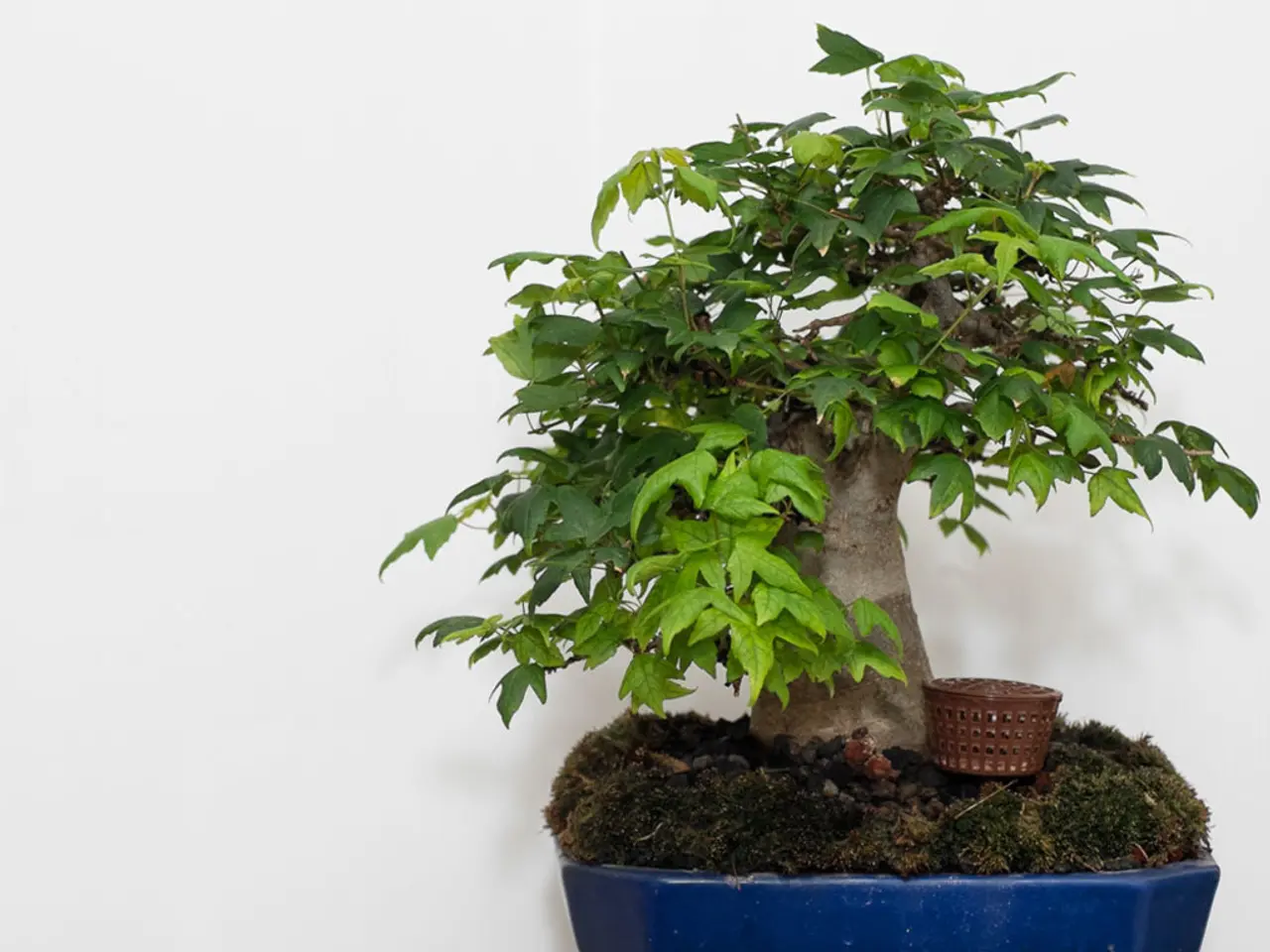Bonsai with Multiple Trunks: Selecting Species and Achieving Harmonious Structure
Creating Harmonious Multi-Trunk Bonsai: A Journey Towards Visual Symphony
Multi-trunk Bonsai, a captivating art form, is not just a collection of trunks, but a harmonious fusion of individual elements that create a visually stunning composition. The key to achieving this harmony lies in the meticulous training of each trunk to fuse naturally.
The Art of Fusion
The process of natural trunk fusion takes several years. To speed up this process, gentle wiring and pruning techniques are used to encourage trunks to twist and turn, creating a natural, organic fusion. However, it's important to note that wire can constrict growth and cause damage, so it's not recommended for fusion. Instead, gentle binding with natural materials like twine or raffia allows for healthy growth and natural fusion.
Choosing the Right Species
Creating a multi-trunk bonsai requires careful selection of compatible tree species. When choosing species for a multi-trunk bonsai, consider those that respond well to training methods like wiring and pruning, have flexible trunks and branches, and suit the desired bonsai styles.
Some suitable species for bonsai include Japanese maple, black pine, juniper, or ficus, which are known to adapt well to bonsai cultivation and styling. It's essential to match species with similar growth patterns, environmental requirements, and leaf size and texture to create a balanced, healthy multi-trunk bonsai composition.
Crafting the Visual Composition
Once the trees are chosen and fused, the bonsai artist's focus shifts to crafting a visually stunning composition that balances the individual elements of the multi-trunk design. This involves considering visual flow, symmetry and asymmetry, proportion and scale, negative space, and unifying elements.
Maintaining Harmony
Multi-trunk bonsai require ideal growing conditions, careful monitoring for signs of stress or disease, regular pruning, protection from extreme temperatures and weather conditions, and regular repotting. Balance is achieved when the visual weight of each element is distributed evenly, creating a sense of stability and equilibrium.
Patience and Attention to Detail
Achieving harmony in multi-trunk Bonsai requires patience, attention to detail, and understanding of the trees' growth patterns. Pruning becomes an art form in multi-trunk bonsai, as strategically removing select branches and foliage enables the creation of visually stunning compositions.
The Reward
The result is a captivating, living sculpture that showcases the artist's skill and patience. With careful selection, training, and care, multi-trunk bonsai can become a centrepiece in any garden or home, offering a constant reminder of the beauty that patience and dedication can create.
- To complement the visual harmony of multi-trunk Bonsai, consider exploring various lifestyle aspects such as fashion-and-beauty, food-and-drink, home-and-garden, and relationships, as these can provide inspiration for the artist's design and maintenance approach.
- Incorporating pets, travel, and cars into a multi-trunk Bonsai display can add unique elements that reflect the owner's individuality and personal interests.
- Shopping for specialized tools, pots, soil, and accessories can elevate the presentation of a multi-trunk Bonsai, creating an inviting and visually pleasing environment.
- With a multi-trunk Bonsai as a constant companion, experiencing the journey of nurturing and growing this unique sculpture can foster a sense of fulfillment and personal growth, mirroring the dedication required in other areas of life.





